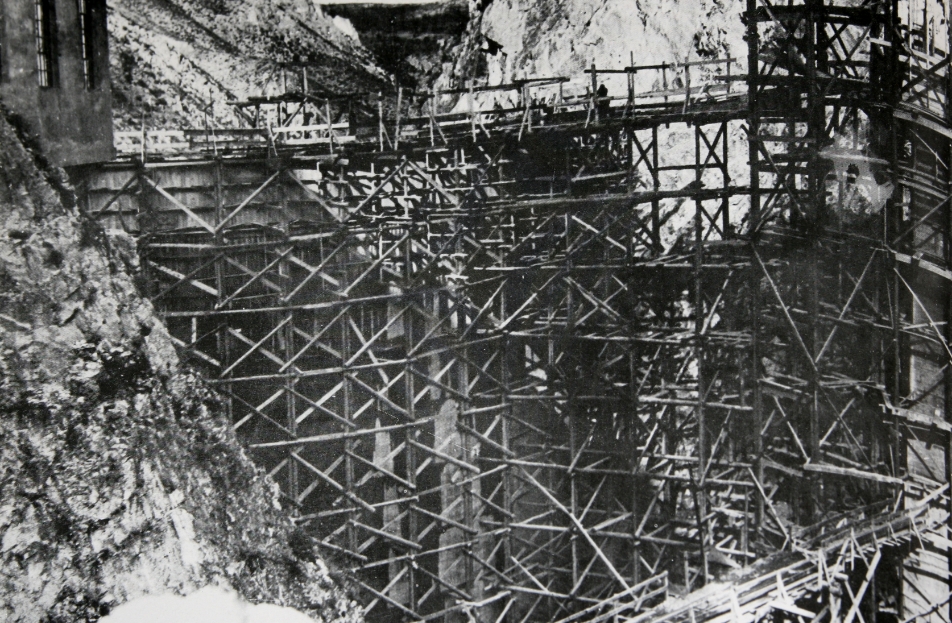The first light bulb in Macedonia was lit in Skopje in 1909, the year of construction of the first steam power plant. At that time, Macedonia was part of the Ottoman Empire.
The electrification of the other cities was progressing independently and separately. The second city to get electricity after Skopje was Bitola in 1924, while in Tetovo, Veles, Kumanovo, Shtip, Kriva Palanka, Gevgelija, Vinica and Kochani the process of electrification was completed by 1930. In the period between 1931 and 1935, Prilep, Kichevo and Demir Kapija also got electricity, while the process of electrification in the period 1936-1940 was completed in Gostivar, Ohrid, Strumica and Probishtip.
At that period, electricity was mainly generated by small hydropower plants and there were also diesel and coal-fired power plants.
The most significant electricity generation plants built before the Second World War were HPP „Pena“ with power of 1,760 КW built in 1927; the diesel power plant in Skopje built in 1933 with power of 1,000 KW; and the HPP „Matka“ with power of 4,160 KW built in 1938.
Towards the end of 1944, Macedonia had a rather modest electricity production of around 14,200 MWh, and installed power of 9,600 KW.

Immediately after the Second World War, the Federal Power Supply Company (FEP) was established in Macedonia which managed all power supply resources in the country. Unlike the previous period when each city managed its own independent and separate power supply development, FEP for Macedonia operated as a single company in charge of the entire territory of Macedonia within Federal Yugoslavia. As time passed, the Company’s names changed: “FEP for Macedonia" until 1954; "Power Supply Community of Macedonia" until 1966; "Electro Macedonia” until 1990; "PE Power Supply Company of Macedonia” until 2005 and, following the separation and the rebranding the name "EVN Macedonia AD"- Skopje came into wide use.

The rehabilitation of the power supply capacities that had been severely damaged or demolished during the War, became a primary and a comprehensive task which was successfully implemented in the post-war period with the aid of the State and the citizens. The process of electrification of Macedonia was nearly completed and electricity became a part of the everyday life in nearly every city and village in the country. The construction of the distribution grid, substations and new power facilities with a sufficient capacity to meet the increasing electricity demand of households and the growing industry took systematic and strenuous efforts. The most important power generation capacities, built between the post-war period and the independence of the Republic of Macedonia in 1991, are as follows:
TPP Madjari (1949)
HPP Mavrovo (1957)
HPP Tikvesh (1968)
HPP Globochica (1965)
HPP Shpilje (1969)
TPP Negotino (1978)
TPP Oslomej (1980)
REK Bitola (1982)
In the period from 1945 to 1990, the power supply system of Macedonia was developed as an integral part of the Power Supply System of the Former Yugoslavia. After the breakup of Yugoslavia, Macedonia gained its independence, and it faced disconnection from the high-voltage grid of the rest of SFRY. As a result, the Macedonian power supply system itself became independent as well, and despite all of the hardships it faced, it managed to avoid any major difficulties in supplying electricity to its customers.
In 2005, the single company “AD Power Supply Company of Macedonia” split into three companies: "AD ELEM" operating in power generation, "AD MEPSO" responsible for power transmission, and “ESM AD” dealing with power Distribution. According to the Sales and Purchase Contract of April 2006, "ESM AD” was acquired by the concern EVN AG from Austria and following the rebranding in 2008, the company got its current name - EVN Macedonia AD Skopje.

Immediately after the privatization of EVN Macedonia by EVN AG in 2006, the Company underwent full reorganization. The inherited poor state in terms of collection, power losses, low quality infrastructure, poor financial results and all other negative indicators started to change thoroughly and systematically. The major investments, the modern organizational and management setup, as well as the use of the latest technological developments in the power supply sector, have helped change Company’s image and performance. br /> In only short time, EVN Macedonia became a clearly recognizable brand in the Republic of North Macedonia and a model of a modern company being awarded many awards and recognitions for its overall operation.
The successful implementation of its reorganization and transformation has undoubtedly served as a solid ground for EVN Macedonia in terms of achieving the goals it has set and of facing all future challenges.